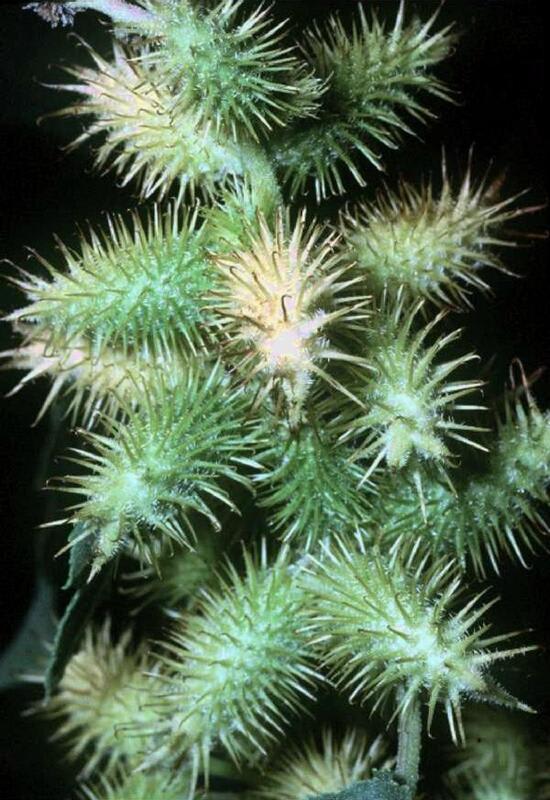Cocklebur, Rough Cocklebur, Ditch-bur, Sheep Bur, Clothbur
Xanthium strumarium

🌿 Morphology
🌞 Growing conditions
🌍 Origin and family
🌾 Uses
Warning: Despite the care taken in writing this sheet, it is essential to cross-reference sources before using or consuming any plant. When in doubt, consult a qualified professional
Permaculture uses
Cocklebur has limited permaculture applications due to its spiky burs and potential toxicity. Seeds have been used as a famine food after careful preparation to remove toxins, but this is not generally recommended. Some traditional medicines utilize the plant, but this requires expert knowledge. It may be used as a barrier plant to deter grazing animals.
Permapeople description
Xanthium strumarium, commonly known as rough cocklebur, is an annual plant species of flowering plants in the sunflower family, native to the Americas and widely naturalized elsewhere. It is considered a noxious weed in many areas.
Botanical description
Xanthium strumarium is an annual herbaceous plant in the Asteraceae family. It typically grows to a height of 1-4 feet. The stems are erect, rough, and often branched. The leaves are alternate, triangular or heart-shaped, coarsely toothed, and hairy. The plant produces separate male (staminate) and female (pistillate) flowers in the same inflorescence. The male flowers are clustered at the tips of the branches, while the female flowers are found in the leaf axils and develop into spiky, bur-like fruits that contain two seeds. The burs are covered in hooked spines, facilitating dispersal by clinging to animals and clothing.
Companion planting
Cocklebur is generally not considered a beneficial companion plant due to its invasive nature and potential to compete with other crops. Its burs can also contaminate harvests. It is best to avoid planting it near desirable plants.
Propagation methods
Cocklebur primarily propagates by seed. The seeds are contained within the spiky burs, which can be collected and dried. Scarification of the seed coat may improve germination rates. Seeds can be sown directly in the ground in spring after the last frost.
History and traditions
Cocklebur has a history of use in traditional medicine in various cultures, particularly in Asia. It has been used to treat a range of ailments, including headaches, arthritis, nasal congestion, and skin conditions. The plant has also been employed as a dye and a source of oil. Historically, the burs have been considered a nuisance due to their ability to contaminate wool and other materials.
Usage calendar
Germination occurs in spring. Flowering typically occurs in summer and early fall. Seed maturation and bur formation happen in the late summer and fall. Harvesting the burs for potential propagation should be done in the fall after they have dried.
